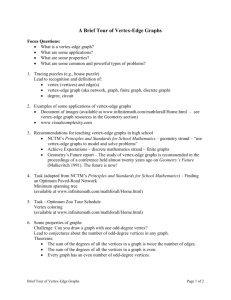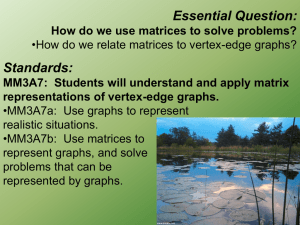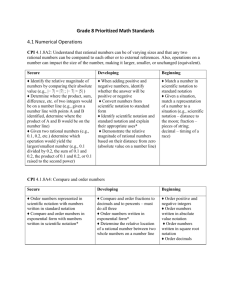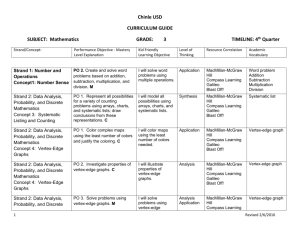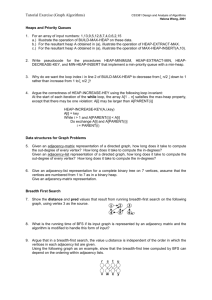Vertex-Edge Graphs and Communication Matrices
advertisement
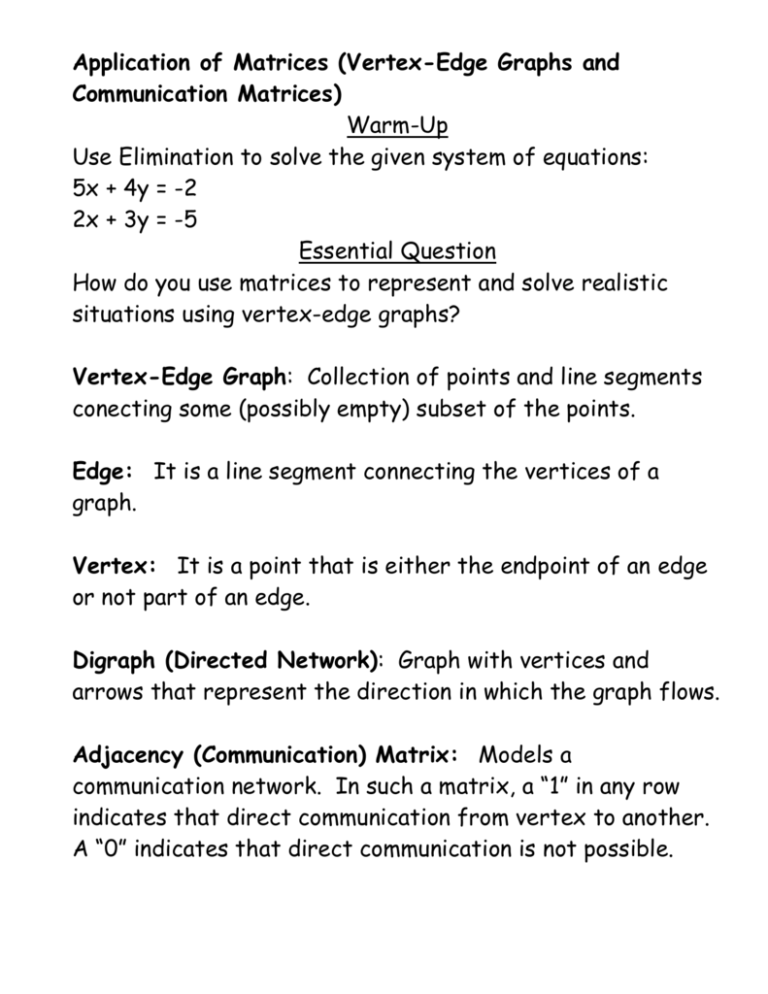
Application of Matrices (Vertex-Edge Graphs and Communication Matrices) Warm-Up Use Elimination to solve the given system of equations: 5x + 4y = -2 2x + 3y = -5 Essential Question How do you use matrices to represent and solve realistic situations using vertex-edge graphs? Vertex-Edge Graph: Collection of points and line segments conecting some (possibly empty) subset of the points. Edge: It is a line segment connecting the vertices of a graph. Vertex: It is a point that is either the endpoint of an edge or not part of an edge. Digraph (Directed Network): Graph with vertices and arrows that represent the direction in which the graph flows. Adjacency (Communication) Matrix: Models a communication network. In such a matrix, a “1” in any row indicates that direct communication from vertex to another. A “0” indicates that direct communication is not possible. Examples: 1. Use a Vertex-Edge graph to represent the situation, and then write a matrix that represents the vertex-edge graph. An airline serves four cities: Bedford, Columbia, Dunwich, and Exton. There are flights between Bedford and Columbia, Bedford and Dunwich, and Columbia and Exton. Step 1: Represent the cities using points. Step 2: Draw the edges for the graph. Step 3: Write the matrix that represents the vertex-edge graph. You Try: 2. An airline serves five cities: Lowell, Montour, Newman, Peoria, and Orlando. There are flights between Lowell and Montour, Lowell and Orlando, Montour and Orlando, Newman and Orlando, and Newman and Peoria. Draw a vertex-edge graph and write the matrix that represents this situation. Directed Network J K L From: Adjacency Matrix To: J K L J 0 1 0 K 0 0 2 L 1 2 1 If A is the adjacency matrix, then A x A = A2 is the number of two-stage paths from one vertex to another vertex by means of an intermediate vertex. Example Problems. 1. a. Write an adjacency matrix. b. Find A2. c. Interpret A3,2. J K L

